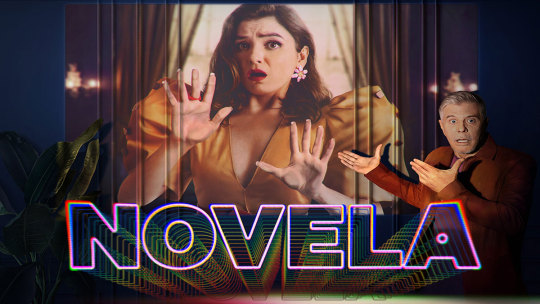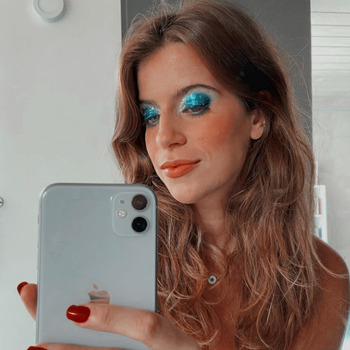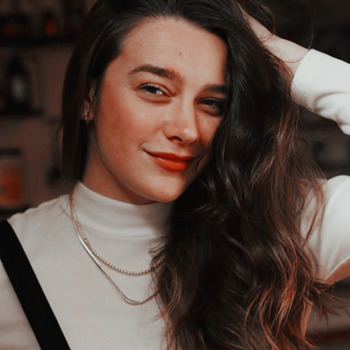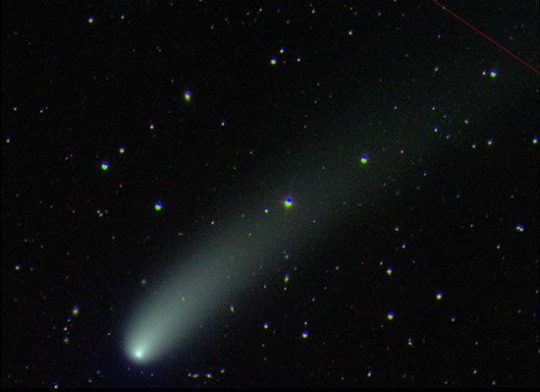#Maria Bopp
Explore tagged Tumblr posts
Text
26 notes
·
View notes
Text
Eu também quase sempre penso que ignorância e alienação são bençãos e a burra sou eu, que sofre por ser consciente.
0 notes
Text
Novela
Novela (Serie 2023) #MonicaIozzi #MiguelFalabella #CaioMenck #MariaBopp #SuzyRêgo #MarcelloAntony Mehr auf:
Serie Jahr: 2023- Genre: Comedy / Fantasy Hauptrollen: Monica Iozzi, Miguel Falabella, Caio Menck, Maria Bopp, Suzy Rêgo, Marcello Antony, Herson Capri, Ary França, Leandro Villa, Luana Xavier, Pedro Fortoni, Gabriela Loran, Elisa Pinheiro, Tarcísio Filho, Ester Dias … Serienbeschreibung: Die Drehbuchautorin Isabel wird von ihrem Mentor Lauro verraten, und als sie beschließt, ihm…

View On WordPress
0 notes
Text
Turma da Mônica Jovem: Reflexos do Medo ganha prévia inédita
Mônica e Magali aparecem em cena inédita de Turma da Mônica Jovem: Reflexos do Medo. #turmadamônica #turmadamônicajovem
A trama Turma da Mônica Jovem: Reflexos do Medo acaba de ganhar uma cena inédita para despertar ainda mais o interesse dos fãs da turma que marcou a infância de milhares de brasileiros. A cena traz Mônica, interpretada por Sophia Valverde, de As Aventuras de Poliana, e Magali, interpretada por Bianca Paiva de Chiquititas. Na prévia, as personagens partilham suas angústias adolescentes e…

View On WordPress
#Ataíde Arcoverde#Bianca Paiva#Carol Amaral#Carol Roberto#Cascão#Cebola#Eliana Fonseca#Giovanna Chaves#Júlia Rabello#Magali#Maria Bopp#Mateus solano#Mauricio de Sousa#Maurício Eça#Mônica#Rodrigo Fernandes#Sophia Valverde#Theo Salomão#Turma da Mônica#turma da mônica jovem: reflexos do medo#xande valois#Yuma Ono
0 notes
Text
[Illuminazione][Sarah Perry]
In una piccola città inglese, sotto lo sguardo luminoso della cometa Hale-Bopp, un pastore e un giornalista intrecciano le loro vite, sfidando le convenzioni e cercando la propria verità.
Sotto la Cometa di Hale-Bopp: una storia di amore, fede e destino Titolo: IlluminazioneScritto da: Sarah PerryTitolo originale: EnlightenmentTradotto da: Anna MioniEdito da: Neri PozzaAnno: 2024Pagine: 350ISBN: 9788854531574 La trama di Illuminazione di Sarah Perry Questa è la storia di una cometa. Si chiama Hale-Bopp, ed è il 1997 quando la sua chioma illumina l’immaginaria cittadina di…
#2024#Anna Mioni#British Fiction#Cometa di Hale-Bopp#Enlightenment#fiction#gay#Hale-Bopp#Illuminazione#LGBT#LGBTQ#LGBTQIA+#libri gay#Maria Văduva#Narrativa#Neri Pozza#Sarah Perry#UK
0 notes
Text
Maria bopp
6 notes
·
View notes
Text
3 notes
·
View notes
Text
Lançamento do livro 'Afetos Colaterais' reúne José de Abreu, Maria Bopp e artistas
Bettina Bopp é formada em Letras pela PUC-SP. Ela é autora da peça infantil “Antes que o Feitiço se Espalhe”, vencedora do Prêmio Panamco Mônica BergamoSão Paulo – SP O ator José de Abreu e sua mulher, a maquiadora Carol Junger, prestigiaram o lançamento do livro “Afetos Colaterais”, da escritora Bettina Bopp, na noite de terça (13), na Livraria da Vila, em Pinheiros, São Paulo. A obra é…

View On WordPress
0 notes
Text
youtube
Chiara Margarita Cozzolani - Quid miseri
Soprano: Miriam Feuersinger, Marie Luise Werneburg Alto: Flavio Ferri-Benedetti Tenore: Raphael Hoehn, David Munderloh Basso: Lisandro Abadie
Cornetto: Frithjof Smith Violino: Regula Keller, Katharina Heutjer Viola: Katharina Bopp Viola da gamba: Brian Franklin Violone: Thomas Goetschel Tiorba: Maria Ferré Organo: Jörg-Andreas Bötticher
0 notes
Photo

8 notes
·
View notes
Photo









Brazilian Actress Random l Atrizes Brasileiras Aleatórios icons
‒ like or reblog if you save
#mariana rios#mariana rios icons#leticia almeida#leticia almeida icons#maria bopp#maria bopp icons#isabella santoni#isabella santoni icons#giovanna lancellotti#giovanna lancellotti icons#mariana molina#mariana molina icons#ana hikari#ana hikari icons#laura neiva#laura neiva icons#jessica ellen#jessica ellen icons#icons br#atrizes brasileiras icons#brazilian actress icons#brazilian icons#icons
27 notes
·
View notes
Link
Lista de idosos confusos com a tecnologia atualizada.
0 notes
Photo










Me Chama de Bruna/ Call Me Bruna (2016- )- Season 1
A middle-class teen runs away from home and decides to work as a call girl. In little time, she becomes Bruna Surfistinha and gains notoriety after writing her routine on a blog.
#me chama de bruna#mechamadebruna#brazilian series#bruna surfistinha#call me bruna#maria bopp#season 1#not my pics#carla ribas#raquel pacheco#o doce veneno do escorpião#the scorpion's sweet venom: the diary of a brazilian call girl#series#women writers#women directors
19 notes
·
View notes
Text
Wave At The Stars and They will Wave Back
“Saturn is my absolute favorite object in the night sky. When I was a child, I had a dog-eared book on the Solar System, which I read over and over, stopping and staring with wonder at the section on Saturn. How could a planet have rings of ice? What would it be like to fly out and visit the planet, to see the rings with your own eyes. How did it get all those strange moons?”
~Maria
Maria has always been fascinated by the night sky and what lays beyond it. As a matter of fact, she met the love of her life, Maxine, while watching Saturn from the Girffith Observatory.
Their eyes locked, time stopped...then Maria tripped and accidentally spilled her iced coffee all over Max in the middle of winter and the rest is history.
So, for this very special article as a second early wedding gift to her and Max, we asked all of you which are your fevourite celestial bodies, and compiled a small list of interesting facts about them!
Saturn

As Maria’s favourite planet, and the reason Max and her met, Saturn has the honour of being at the very top of the list.
Did you know:
Saturn has 82 moons As of the pennings of this article, Saturn boasts Solar System's most known moons: 82! Some of these are large, like Titan, the second largest moon in the Solar System. But most are tiny – just a few km across, and they have no official names.
There could be life near Saturn Not life on Saturn; the planet is way too hostile to support life. But there could be life on one of Saturn’s moons: Enceladus. NASA’s Cassini spacecraft discovered ice geysers blasting out of Enceladus’ southern pole. This means that some process is keep the moon warm enough that water can remain a liquid underneath the surface. And wherever we find liquid water on Earth, we find life
Jupiter

For number two, we have Jupiter, named after the King of the Olympians himself.
Did you know:
Jupiter has 79 moons Second only to Saturn, Jupiter has a 79 confirmed and named satellites. However, it is estimated that the planet has over 200 natural satellites orbiting it. Almost all of them are less than 10 kilometers in diameter, and were only discovered after 1975, when the first spacecraft (Pioneer 10) arrived at Jupiter. However, it also has four major moons, which are collectively known as the Galilean Moons. These are, in order of distance from Jupiter, Io, Europa, Ganymede, and Callisto. These moons are some of the largest in the Solar System, with Ganymede being the largest, measuring 5262 km in diameter.
You Can See Jupiter With Your Own Eyes Jupiter is the third brightest object in the Solar System, after Venus and the Moon. Chances are, you saw Jupiter in the sky, and had no idea that’s what you were seeing. And here at Universe Today, we are in the habit of letting readers know when the best opportunities for spotting Jupiter in the night sky are. Just think, you’ll be seeing precisely what Galileo did when he gazed at the planet in 1610!
Mars

For the last planet on our list -but definitely not the least- we have Mars; the Red Planet.
Did you know:
Mars Had Water In The Ancient Past We’ve been debating for centuries about whether Mars had life or not. In fact, the astronomer Percival Lowell misinterpreted observations of “canali” — the Italian word for channels — on the planet as evidence of alien-made canals. It turned out Lowell’s observations were hampered by poor telescope optics of his day, and the canals he saw were optical illusions. That said, several spacecraft have spotted other signs of ancient water — channels grooved in the terrain and rocks that only could have formed in the presence of water, for example.
Mars Has Two Moons – And One Of Them Is Doomed: The planet has two asteroid-like moons called Phobos and Deimos, named after the sons of Ares -or the Roman Mars- in Greek mythology. Because they have compositions that are similar to asteroids found elsewhere in the Solar System, according to NASA, most scientists believe the Red Planet’s gravity snatched the moons long ago and forced them into orbit. But in the life of the Solar System, Phobos has a pretty short lifetime. In about 30 million to 50 million years, Phobos is going to crash into Mars’ surface or rip apart because the tidal force of the planet will prove too much to resist.
Black Holes

Moving on from planets to the other beauties of space, for number four we have Black Holes.
Did you know:
You Can’t Directly See a Black Hole. A black hole is called a black hole because of it’s color, especially since light can’t escape. What we can see, though, is the effects of a black hole. Analyzing the surrounding area of a black hole, we can see its effects upon its environment. For example, a star that’s close enough to a black hole can be seen being ripped apart.
Dying Stars Lead to Stellar Black Holes. The death of large stars lead to black holes, because a star’s gravity will overwhelm the star’s natural pressure that it maintains to keep its shape. When the pressure from the nuclear reactions collapses, gravity overwhelms and collapses the star’s core, and the star’s other layers are thrown off into space, and this process is also known as a supernova. The remainder of the core collapses, a spot overcome by density and without volume – a black hole.
There are Three Categories of Black Holes. 1) Primordial Black holes – These are the smallest of black holes and range from an atom’s size to a mountain’s mass.
2) Stellar Black Holes – These are the most common of black holes and they can be up to 20 times more massive than the Sun. There are also a variety of these all over the Milky Way.
3) Supermassive Black Holes – These are the largest of black holes, being more than 1 million times more massive than the Sun. There’s also a song named Supermassive Black Hole by Muse.
Perseid Meteors

Did you know:
We’ve had a near-miss in the past, and there may be one again in the future. Back in the early 1990s, astronomer Brian Marsden calculated that Swift-Tuttle might actually hit Earth on a future pass. More observations quickly eliminated all possibility of a collision. Marsden found, however, that the comet and Earth might experience a cosmic near miss (about a million miles) in 3044.
The meteors are what shooting stars are made of. When a Perseid particle enters the atmosphere, it compresses the air in front of it, which heats up. The meteor, in turn, can be heated to more than 3,000 degrees Fahrenheit (1,650 Celsius). The intense heat vaporizes most meteors, creating what we call shooting stars. Most become visible at around 60 miles up (97 kilometers). Some large meteors splatter, causing a brighter flash called a fireball, and sometimes an explosion that can often be heard from the ground.
Next Time Around. Swift-Tuttle is due back in 2126 (as you know now, it won't hit us) and astronomers think it might become a spectacular naked-eye comet like Hale-Bopp. If historical calculations are correct (see Fact #9) then the 2126 appearance will mark the comet's 3rd millennium of human observation, assuming someone is in fact around to see it.
Pulsars

Did you know:
Pulsars are what remains after the death of a massive star. Pulsars are types of neutron stars; the dead relics of massive stars. What sets pulsars apart from regular neutron stars is that they’re highly magnetized, and rotating at enormous speeds. Astronomers detect them by the radio pulses they emit at regular intervals.
Pulsars are invaluable when it comes to discovering more about space. Pulsars help us search for gravitational waves, probe the interstellar medium, and even find extrasolar planets in orbit. In fact, the first extrasolar planets were discovered around a pulsar in 1992, when astronomers Aleksander Wolszczan and Dale Frail announced the discovery of a multi-planet planetary system around PSR B1257+12 – a millisecond pulsar now known to have two extrasolar planets.
It has even been proposed that spacecraft could use them as beacons to help navigate around the Solar System. On NASA’s Voyager spacecraft, there are maps that show the direction of the Sun to 14 pulsars in our region. If aliens wanted to find our home planet, they couldn’t ask for a more accurate map.
Eliot Wilde, journalist and writer for Night Owl and host of Night Owl FM
3 notes
·
View notes
Text
Conheça Maria Bopp, atriz que viralizou com o tutorial de maquiagem Blogueirinha do fim do mundo - Revista Marie Claire | Mulheres do Mundo
Conheça Maria Bopp, atriz que viralizou com o tutorial de maquiagem Blogueirinha do fim do mundo – Revista Marie Claire | Mulheres do Mundo
https://revistamarieclaire.globo.com/amp/Mulheres-do-Mundo/noticia/2020/02/conheca-maria-bopp-atriz-que-viralizou-com-o-tutorial-de-maquiagem-blogueirinha-do-fim-do-mundo.html
View On WordPress
1 note
·
View note
Text
Nota sobre a literatura brasileira no século XX
A literatura brasileira no século passado pode ser dividida em quatro etapas: a primeira vai de 1900 a 1920, a segunda abrange as décadas de 20, 30 e 40, a terceira as décadas de 50, 60 e 70, e a última etapa os anos 80 e 90. Grosso modo, podemos falar de uma literatura pré-moderna ou pós-romântica na primeira etapa, uma literatura moderna na segunda e na terceira etapa, e uma literatura pós-moderna na última.
Os Sertões, de Euclides da Cunha, é talvez o grande feito literário do período 1900-1920. A prosa de feição polêmica, irônica ou de crítica social, porém temperada de patriotismo, aparece em Ruy Barbosa, Monteiro Lobato e Lima Barreto. Outros nomes relevantes da prosa foram Graça Aranha, João do Rio e Raul Pompeia. Na poesia lírica temos Alphonsus de Guimaraens, Vicente de Carvalho, Catulo da Paixão Cearense, Raul de Leoni, Augusto dos Anjos, Gilka Machado, Manuel Bandeira. A crítica literária atinge a sua maturidade com José Veríssimo, Afrânio Peixoto e a Pequena história da literatura brasileira, de Ronald de Carvalho (1919), resume toda a evolução crítica anterior. No campo filosófico ou humanístico, entre os clássicos de Joaquim Nabuco (Minha Formação, 1900) e Ruy Barbosa (Oração aos Moços, 1920), o destaque vai para Raimundo de Farias Brito, Jackson de Figueiredo e Alberto Torres.
A primeira onda do modernismo tem um marco histórico na Semana de Arte Moderna (São Paulo, 1922). Ao redor dessa aglutinam-se alguns nomes da geração anterior, como Manuel Bandeira e Ronald de Carvalho, e outros que encarnam com mais radicalismo a "idéia modernista", como Mário de Andrade, Oswald de Andrade e Raul Bopp. Temos ainda um grupo mais conservador, que continuará a tradição do nacionalismo romântico: Guilherme de Almeida, Menotti del Picchia, Cassiano Ricardo, Plinio Salgado (que do Verdeamarelismo passou para o Integralismo). Muito importante nessa etapa é a literatura de feição católica: Jackson de Figueiredo, Alceu Amoroso Lima, Tasso da Silveira, padre Leonel Franca, Leonardo Van Acker, Octávio de Faria, Gustavo Corção, Jorge de Lima e Murilo Mendes. A poesia terá ainda um Carlos Drummond de Andrade, Vinícius de Moraes, Augusto Frederico Schmidt, Cecília Meireles, Henriqueta Lisboa, João Cabral de Melo Neto, Mário Quintana e Lêdo Ivo. No ensaio figuram Sérgio Milliet, Paulo Prado, Graça Aranha, Prudente de Morais Neto, Afonso Arinos, Oliveira Viana. Temos ainda o ciclo do romance regionalista nordestino, com José Lins do Rego, Jorge Amado, Graciliano Ramos, Raquel de Queirós, José Américo de Almeida, Amando Fontes. A prosa de ficção se desenvolve também com Alcântara Machado, Érico Veríssimo, Dyonélio Machado (Os Ratos, 1935), Lúcio Cardoso, José Geraldo Vieira, Clarice Lispector (Perto do coração selvagem, 1944), além do teatro de Nelson Rodrigues. Nas humanidades, cabe destacar Sérgio Buarque de Holanda, Gilberto Freyre, Caio Prado Júnior, Câmara Cascudo, Josué de Castro, Fernando de Azevedo e Anísio Teixeira. A filosofia conta com Vicente Ferreira da Silva, João Cruz Costa, Pontes de Miranda, Miguel Reale (fundador do Instituto Brasileiro de Filosofia, 1949), Amoroso Costa, Renato Almeida (Fausto - Ensaio sobre o problema do ser, 1922).
A segunda onda do modernismo vai ter início na década de 50. É quando aparece a Poesia Concreta, dos Irmãos Campos e Décio Pignatari, ou a Filosofia Concreta de Mário Ferreira dos Santos. O Neoconcretismo, movimento sobretudo plástico, contará em sua origem com um poeta influente - Ferreira Gullar. Indo numa direção contrária dos concretos, mais ligado ao surrealismo ou ao movimento beat, aparece Roberto Piva, Sergio Lima, Jorge Mautner, Cláudio Willer, Waly Salomão e outros. Cabe ainda destacar, no lirismo, Paulo Mendes Campos, Hilda Hilst, Mário Faustino, Carlos Nejar, Álvaro Alves de Faria, Carlos Felipe Moisés, Eunice Arruda, Adélia Prado, Chacal e a coletânea 26 Poetas hoje, de Heloísa Buarque de Hollanda. Guimarães Rosa e Ariano Suassuna vão renovar a temática do "sertão". Transitando entre a poesia, o romance, a crítica e o ensaio, temos Mário Chamie, José Paulo Paes, Paulo Leminski, Glauber Rocha, Antônio Olinto, Affonso Romano de Sant'Anna. Augusto Boal cria o Teatro do oprimido, além de sua prosa teórica ou ensaística. Manoel de Barros, que estreara em 1937, começa a publicar com maior frequência e se torna um referencial da poesia até o fim do século. Pedro Nava renova o gênero autobiográfico, se tornando talvez o maior memorialista do século. No romance ou conto se destacam Antônio Callado, Campos de Carvalho, José Agrippino de Paula, José Candido (O coronel e o lobisomem, 1964), Carlos Heitor Cony, Ignácio de Loyola Brandão, João Ubaldo Ribeiro, Fernando Sabino, Raduan Nassar (Lavoura Arcaica, 1975), Dalton Trevisan, Osman Lins, Murilo Rubião, Moacyr Scliar. A prosa de João Antônio, Plínio Marcos e Rubem Fonseca vai renovar a temática do submundo, da marginalidade e violência social. Na filosofia e ciências humanas, temos Vicente Ferreira da Silva, Vilém Flusser, Leandro Konder, Darcy Ribeiro, Florestan Fernandes, Celso Furtado, Paulo Freire, José Osvaldo de Meira Penna, Roberto Campos, José Guilherme Merquior, Antonio Paim, Paulo Mercadante, Hélio Jaguaribe, João de Scantimburgo, Raimundo Faoro. O conservadorismo católico é representado por Plinio Corrêa de Oliveira, Gustavo Corção e Nelson Rodrigues. Na crítica destacam-se Otto Maria Carpeaux, Anatol Rosenfeld, Antonio Candido, Mário Pedrosa, Roberto Schwarz, Wilson Martins, Décio de Almeida Prado, Paulo Emílio Sales Gomes. Na crônica, Millôr Fernandes e Otto Lara Resende.
A última etapa, o fim do século, é um momento de declínio, mas temos obras ou autores importantes. Os melhores são autores que estrearam em décadas passadas, mas que publicam obras seminais no fim do século, como Bruno Tolentino (As horas de Katharina, 1994), Dora Ferreira da Silva (Poesia Reunida, 1999), Ângelo Monteiro, Alberto da Cunha Melo, Ivan Junqueira, Raimundo Carrero, J. J. Veiga, Caio Fernando Abreu (Os Dragões não conhecem o Paraíso, 1988). Mas há também novos nomes: Ana Cristina César, João Gilberto Noll, Milton Hatoum, Diogo Mainardi, José Roberto Torero. E aqueles autores de "sucesso", mas de valor duvidoso, ou que se lançaram em novos gêneros literários: Chico Buarque, Paulo Coelho, Márcio Souza, Luis Fernando Verissimo, João Silvério Trevisan, Drauzio Varella (Estação Carandiru, 1999). Na crônica ou crítica, o destaque é Paulo Francis, Nelson Brissac Peixoto (Cenários em Ruínas, 1987), Sábato Magaldi, Nelson Aguilar. Alberto Lins Caldas e o Madeirismo representa uma tentativa de reatar com o modernismo e as vanguardas do início do século. Já Olavo de Carvalho se destaca como polemista conservador (O Imbecil Coletivo, 1996). Na filosofia ou humanidades, temos Henrique Cláudio de Lima Vaz, Paulo Eduardo Arantes, Bento Prado Júnior, Sergio Paulo Rouanet, Gilberto de Mello Kujawski, Marcelo Gleiser (A Dança do Universo, 1997), Rubem Alves, Ciro Flamarion Cardoso, Gilberto Velho, Roberto DaMatta, livros sobre ou dos irmãos Villas-Bôas, o trabalho de mitologia grega de Junito de Souza Brandão etc.
25 notes
·
View notes